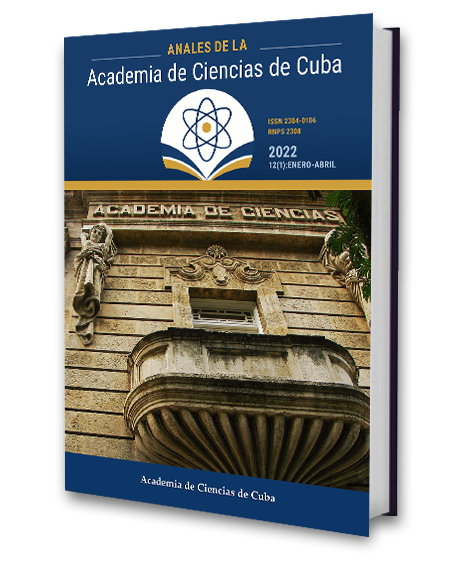First report of ferrochelatase 1 in Nicotiana tabacum L.: its role in the abiotic stress response and development of plants
Keywords:
tobacco, abiotic stress, ferrochelatase, embryogenesis, hemeAbstract
Introduction. Cuba is threatened by climate change. Some enzymes act as a shield against oxidative stress, always associated with salinity, water deficit, or excess and extreme temperatures; those enzymes have Heme as a cofactor. Heme is a tetrapyrrole, similar to chlorophyll, but with Fe instead of Mg as the central atom. The response associated with Heme was investigated in tobacco plants under saline, water, and temperature stress, together with the model plant Arabidopsis thaliana. The presence of the enzyme Ferrochelatase 1 (responsible for chelating iron to tetrapyrrole) was reported in tobacco tissues for the first time for science. Plants have two isoforms of Ferrochelatases (FC1 and FC2). Mutating the model plant for the Ferrochelatase 1 gene was lethal for the embryos. Methods. By comparing FC1 and FC2 mRNA levels in wild-type plant embryos, it was demonstrated that FC1 is the predominant isoform during embryo maturation. Therefore, the regulation of FC expression in time and space during embryogenesis is a prerequisite for the proper development of the embryo. Results. It is concluded that the Heme produced by FC1 is essential for embryogenesis in addition to stress responses. Antisense lines for FC1 had an early flowering phenotype on short days; this made it possible for the first time to establish a relationship between the Heme produced by FC1 and the flowering process. Heme produced by the FC1 isoform is important in reproductive metabolism. This knowledge in the hands of breeders could be used to obtain productive cultivars with the capacity to acclimatize to abiotic stresses associated with climate change, which would potentially give us some advantage to mitigate its effects. This work has stimulated scientific exchange with Germany. The results are included as pedagogical techniques for the teaching of modern molecular biology methods, in the high-level training of young Cuban and Latin American scientists at the University of Havana, in the 5 editions of the joint course “Basic methods in plant molecular biology and plant physiology” with the Humboldt University of Berlin.Downloads
Published
How to Cite
Issue
Section
License
The journal Anales de la Academia de Ciencias de Cuba protects copyright, and operates with a Creative Commons License 4.0 (Creative Commons Attribution-NonCommercial License 4.0). By publishing in it, authors allow themselves to copy, reproduce, distribute, publicly communicate their work and generate derivative works, as long as the original author is cited and acknowledged. They do not allow, however, the use of the original work for commercial or lucrative purposes.
The authors authorize the publication of their writings, retaining the authorship rights, and assigning and transferring to the magazine all the rights protected by the intellectual property laws that govern in Cuba, which imply editing to disseminate the work.
Authors may establish additional agreements for the non-exclusive distribution of the version of the work published in the journal (for example, placing it in an institutional repository or publishing it in a book), with recognition of having been first published in this journal.
To learn more, see https://creativecommons.org






